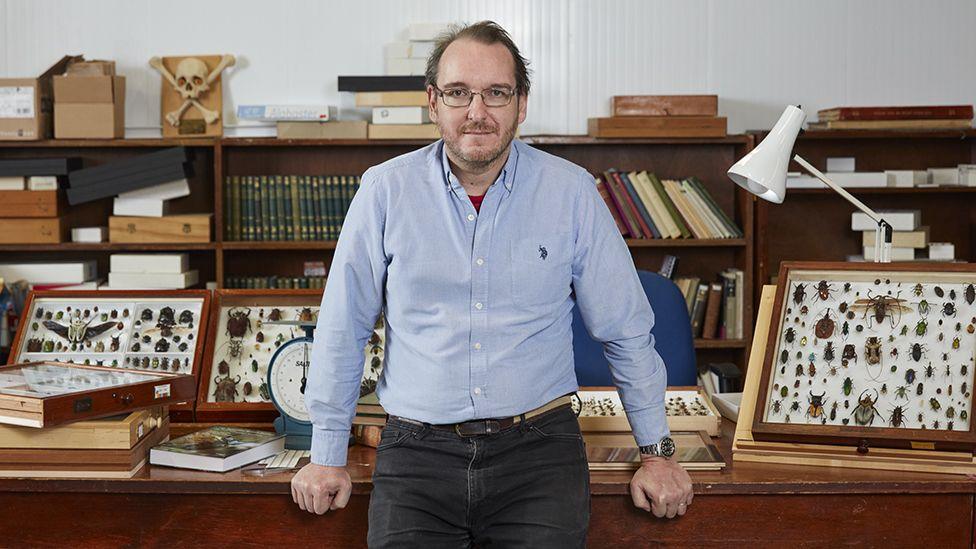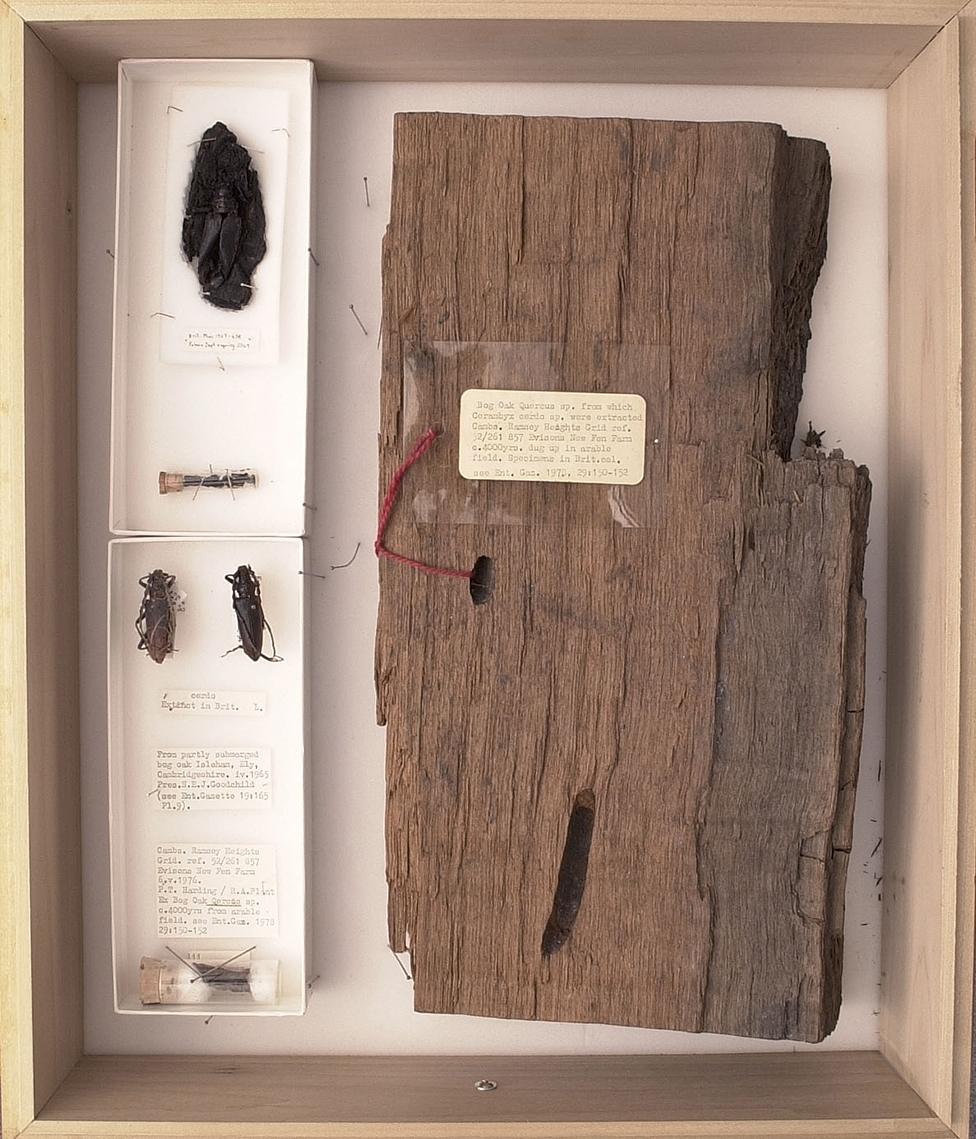Bog beetles finally reveal their remarkable age
- Published

As big as your thumb: If alive today they'd be among Britain's biggest beetles
It's amazing what treasures are tucked away in the collections of London's Natural History Museum - some not fully recognised yet even by the curators.
Consider two beetles wedged in the grooves of a piece of oak that was dug from a Cambridgeshire bog in the 1970s.
The insects were donated to the London institution by a farmer concerned they might be an invasive species. They weren't, and so were put in a drawer.
Only now have they been examined and shown to be nearly 4,000 years old.
The beetles are Oak Capricorns (Cerambyx), a species not previously known to have ever existed in Britain.
About the size of your thumb, they have wonderful long antennae. And if alive today and resident in the UK, they would certainly be among the country's largest beetles.

Max Barclay is on a "voyage of discovery" every day in the museum's collections
"They're as big as a stag beetle," said the NHM's senior curator of insects, Max Barclay.
"As far as I know, the story is this: A farmer in eastern England was cutting up wood he'd found while doing some deep ploughing and discovered these insects inside; dead, of course. This was a huge piece of waterlogged oak, and he sent us a sample. I think, primarily, he was concerned the beetles were pests. My colleagues at the time said, 'well, they're not British', and so they were left.
"Today, you find this species halfway down France. You get it in Poland, Hungary and into Slovakia. And there are also old records from southern Germany.
"We recently had the opportunity with some American collaborators to actually date the wood and the beetles. This was really interesting. Because the beetles are inside the wood, you know they're the same age; and it's therefore a test of the dating techniques to show they get the same results whether it's plant material or animal material. It's a kind of Rosetta Stone moment."

Go back 4,000 years and eastern England would have been covered by many more trees
The radiocarbon dating found the beetles and the oak to be 3,785 years old.
The farmer's land near Ramsey in Cambridgeshire would have looked very different back then.
It was the Bronze Age, and we think these islands were experiencing relatively dry and warm conditions. We don't have thermometer records but many other similar "proxies" suggest this. The presence of the wood-chomping beetles probably speaks also to more forested times. East Anglia has since been cleared of nearly all its ancient woodlands.
If you're wondering why it's taken more than four decades to properly describe these beetles, consider this: The NHM holds 8-10 million beetle specimens in its collections. It would be a mammoth task to fully assess all of them.
You can still find something "new" in the insects brought back to Britain by the great naturalists Charles Darwin and Alfred Russel Wallace. Darwin on his Beagle expedition picked up 8,000 beetles. Wallace, working in the "Malay archipelago", amassed 10 times that number.
"There's a voyage of discovery to be made in the collections every day. I like to call it 'the last frontier of exploration'," Max told BBC News.
The beetles' story is featured in the next episode of the Channel 5 documentary series, Natural History Museum: World of Wonder, which airs on Thursday 28 January at 20:00 GMT.
